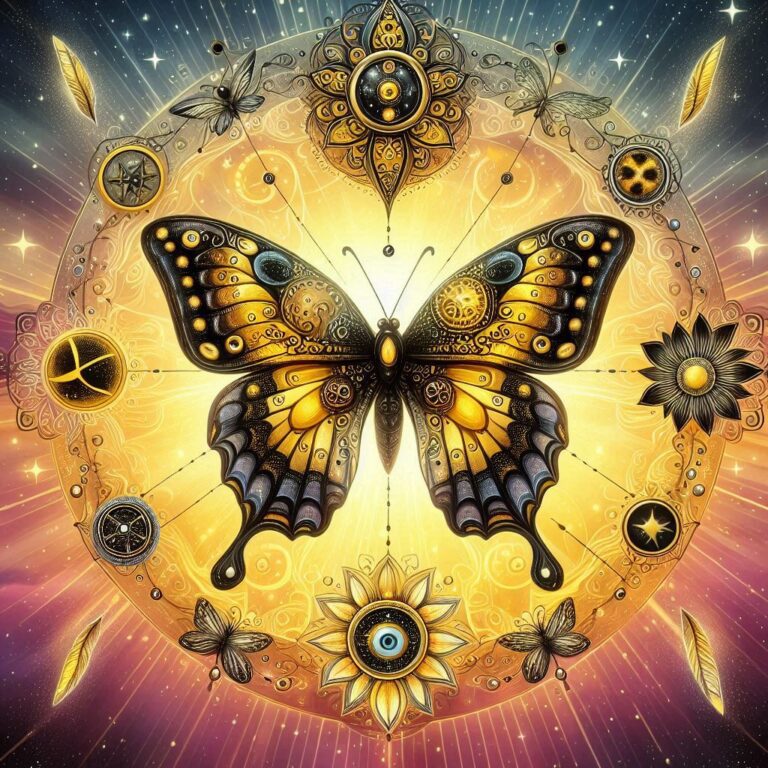Spiritual Meaning of the Blood Moon: Unlocking Lunar Mysteries
The moon has captivated humanity since the dawn of time. Ancient civilizations carefully tracked its phases and movements, ascribing spiritual meaning to its waxing, waning, and eclipse. In modern times, the phenomenon known as the “blood moon” has sparked renewed fascination with the lunar mysteries.
Key Takeaways
1. A blood moon is a total lunar eclipse that gives the moon a reddish color.
2. Ancient cultures like the Mesopotamians, Incas, and Native Americans viewed the blood moon as an omen with spiritual meaning.
3. The blood moon prophecies of 2013 predicted end times based on biblical verses about the moon turning red.
4. The personal story of Kalia Kelmenson shows how the blood moon can represent releasing suppressed emotions and finding balance.
5. Symbolic spiritual meanings include cycles of loss/rebirth, balance of dark and light, a liminal passageway, and initiation.
6. Spiritual practices during a blood moon eclipse involve creating moon altars, chanting, meditating, and moon journaling.
7. While mythical, the blood moon offers a portal for self-exploration, healing, and glimpsing mystical realms of consciousness.

What is a Blood Moon?
A blood moon is a descriptive term for a total lunar eclipse that occurs while the moon is in its full phase. During a total eclipse, the moon passes into the shadow cast by the Earth, blocking direct sunlight from reaching the lunar surface.
Some sunlight still reaches the moon indirectly, refracting through the Earth’s atmosphere. Shorter wavelengths like blue and green are filtered out, while longer wavelengths at the red end of the spectrum pass through, bathing the eclipsed moon in an eerie crimson glow. This gives the moon a reddish or coppery hue, leading many observers to describe it as a “blood moon.”
| Blood Moon Event | Date |
|---|---|
| Lunar Eclipse | May 15, 2022 |
| Lunar Eclipse | November 8, 2022 |
| Lunar Eclipse | March 14, 2025 |
| Lunar Eclipse | September 7, 2025 |
Blood moon eclipses are perfectly natural astronomical phenomena, caused solely by the relative positions of the sun, moon, and Earth. However, these dramatic events have inspired a sense of mystical awe and wonder throughout history.
Ancient Cultures and the Blood Moon
The blood moon has held deep spiritual meaning for cultures around the world since ancient times.
Mesopotamia
Ancient Mesopotamians saw lunar eclipses as bad omens, linked to danger for their kings and kingdoms. The blood moon was seen as a sign of coming demise for the monarch. These beliefs were likely rooted in the combined fear and awe these early cultures had for eclipses, which disrupted the usual nightly illumination.
The Incas
The Incas of South America also viewed the blood moon as foretelling doom. Their mythology spoke of the moon being attacked by a celestial creature, causing its reddish color. To the Incas, a lunar eclipse represented a battle between the cosmic forces of order and chaos.
Hinduism
In the Hindu tradition, eclipses are seen as inauspicious events that disturb the normal flow of energy between the sun, moon, and Earth. Pregnant women are advised not to venture out during an eclipse. Temples are closed and prayer rituals altered during this chaotic time.
Native American Traditions
Some Native American tribes share the Hindu perception of eclipses as periods of cosmic instability. However, they approach such phenomena as opportunities to nourish the moon by dancing, drumming, or praying. The Potawatomi people light fires and make offerings to the weakened moon to provide it with light and strength.
Islam
Muslims view solar and lunar eclipses as a reminder of God’s power. When an eclipse occurs, believers are encouraged to reflect on God’s magnificence and pray for mercy and forgiveness. Special Salat prayers are performed during the eclipse.
As we’ll explore next, the blood moon took on renewed spiritual meaning in modern times, thanks to the blood moon prophecies.

The Blood Moon Prophecies
In 2013, interest in the blood moon was ignited thanks to a series of apocalyptic prophecies publicized by two Christian ministers, Mark Blitz and John Hagee. They drew a connection between the upcoming tetrad of lunar eclipses in 2014-2015 and biblical prophecies of the moon turning to blood before the “end times.”
References to the moon darkening and turning red are found in several places in the Bible, most notably in Joel 2:31, Acts 2:20, and Revelation 6:12. Though these verses do not specifically mention eclipses, Hagee and others interpreted them as predicting the coming “Four Blood Moons,” aligning with Jewish holidays.
This blood moon prophecy caught fire in Christian media, spreading fears that the eclipses were signalling the arrival of the apocalypse. However, the hypothesized link between lunar eclipses and biblical prophecy has been thoroughly debunked by astronomers and theologians alike.
While the hype around the Four Blood Moons has died down, they focused global attention on the genuine beauty, mystery, and phenomena of lunar eclipses. The next section explores the personal spiritual meaning one woman found in the blood moon.
A Spiritual Awakening Under the Blood Moon
Spiritual teacher Kalia Kelmenson had a profound encounter with the blood moon in 2013. While observing a total lunar eclipse, she was struck by the moon’s transformation from radiant white orb to darkened red disk.
The experience took on extra significance in light of her father’s recent passing. As darkness eclipsed the moon’s bright surface, Kalia felt her own grief and turbulent emotions rising within.
Though painful, this release allowed for an opening to spiritual insight. She realized that just as the moon exists in both illuminated and darkened states, her own soul contained both light and shadow.
Kalia found meaning in honoring the full spectrum of human emotions as natural, rather than suppressing more challenging feelings like anger, shame, and grief. She relates this to the yin-yang concept of balance between seeming opposites.
This personal story demonstrates how the blood moon can represent a time of releasing what is hidden in darkness, to allow wholeness and healing. Let’s look at the mystical meaning behind this.

The Spiritual Significance of the Blood Moon
What insights can watching the moon be obscured in shadow offer the modern spiritual seeker? Here are some of the symbolic meanings associated with the blood moon phenomena throughout time and culture:
- The passage between life and death – The moon vanishing into darkness can represent the dissolution of the ego or identity. This allows a transcendence of ordinary consciousness, entering the mystical realm beyond forms.
- Honoring cycles of loss and rebirth – As the moon wanes, diminishes, and becomes eclipsed, it embodies the inescapable cycles of loss and renewal in life. Making space for grief and transition allows joyful rebirth.
- Balance between dark and light – The moon’s shadow reminds us that light and dark, the conscious and subconscious, are not mutually exclusive but rather complementary halves of a whole.
- The liminal passageway – The blood moon marks a liminal passageway between the everyday and the sacred, the mundane and the magical. Liminal zones blur boundaries, inviting us to transcend ordinary thinking.
- Initiation into mystical realms – For shamans and initiates, eclipses represent a threshold crossing into sacred knowledge, facilitating visionary states. The blood moon is the perfect portal for such mystical transport.
Lunar Eclipse Spiritual Practices
Below are some suggested spiritual practices to try during the total lunar eclipse, to plug into its mystical energies:
- Create a moon altar – Cleanse sacred objects like crystals, feathers, shells, flowers, and photos, then arrange them on a cloth, dish, or tray while focusing on radiating loving blessings to the moon.
- Moonbath – Stand or sit peacefully naked or in a robe outdoors or by a window in direct moonlight. Feel the light infusing your being, breathing slowly and mindfully.
- Chanting – Sing, tone, or chant using your voice to honor the moon. Let the vibrations move through and realign your energy field. You could also try drumming.
- Moon journal – Write down your thoughts, feelings, dreams, and insights by moonlight. This can reveal hidden truths the blood moon is illuminating within your subconscious.
- Movement – Perform gentle yoga, dance, or slow-motion movements to harmonize your energies with the moon’s phases. Move spontaneously if called, while remaining present.
- Moon meditation – Observe the eclipse stages mindfully, focusing on your breath and sensations. Open to any mystical visions or guidance received.
The blood moon eclipse offers the chance to align with lunar energies and potentially glimpse untapped mystical realms. Approach this cosmic dance respectfully, and let the moon inspire magic, healing, and self-discovery.

Frequently Asked Questions About the Blood Moon
Many mystified observers have questions about the blood moon phenomena. Here are answers to some common queries:
Why does the moon turn red during a total lunar eclipse?
Sunlight passing through Earth’s atmosphere is refracted towards the red end of the spectrum, bathing the moon in a reddish glow. Blue and green wavelengths are filtered out by our atmosphere.
How often do total lunar eclipses occur?
Total lunar eclipses happen approximately every 1-3 years. The moon must be full for an eclipse to occur. Partial eclipses are more common.
Do lunar eclipses occur at night?
Yes, lunar eclipses only happen during nighttime hours, when the moon is opposition to the sun. A solar eclipse happens during daytime when the moon passes between Earth and sun.
Can I look directly at a blood moon eclipse?
Yes, unlike a solar eclipse it is perfectly safe to look at a total lunar eclipse. No special equipment is needed to observe the moon during its dramatic transformation.
Will every full moon eclipse appear red?
The amount of red color depends on atmospheric conditions. Volcanic eruptions or dust storms can enhance the blood moon’s redness. Less particles makes the eclipse darker and grey.
Are blood moon eclipses linked to natural disasters or conflicts?
There is no statistical evidence for any causal relationship between eclipses and catastrophic events. These connections are psychological projections, not physical precursors.
Can I photograph the blood moon?
Yes, lunar eclipses make striking subjects for photography and require only basic skills and equipment like a DSLR camera, tripod, and telephoto lens. Use manual settings and edit for best results.
In our scientific era, it’s easy to dismiss the myths and lore around the blood moon as superstitions. Yet as Kalia’s story shows, embracing the mystery of the moon’s magic can open portals to self-discovery. Gazing into the shadows of an eclipsed moon can illuminate hidden truths waiting to be revealed in our own souls.






